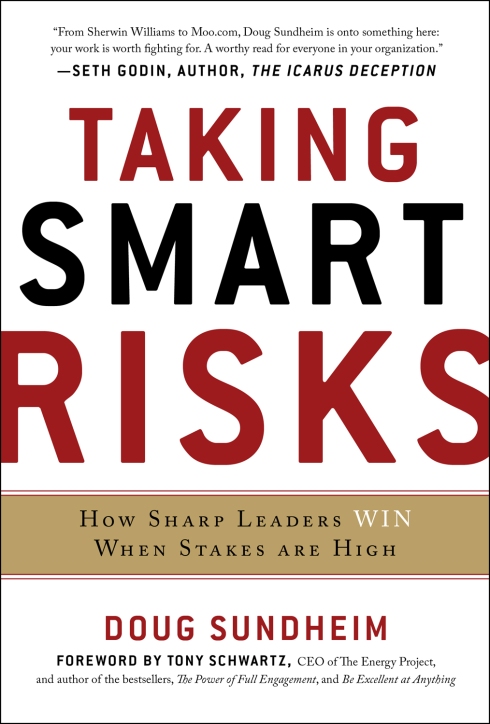Removing fear from failure is one of the fastest ways to accelerate innovation
We all love shortcuts. Probably the most frequent short-cut question I get asked right now is: “How can we fast-track a culture of innovation in this place?”
That’s a post for another day; but one of the follow up questions I’ll often pose back is, “What’s it like to fail here?”
It’s a great ‘treasure map’ question as it unearths important cultural gems and gives a good indication of the attitude towards innovation at a senior level.
Failure to fail well is one of the biggest blockers to creativity and innovation.
Without failure, you can’t expect much that is truly new to emerge. In organisations for whom innovation is a genuine strategic priority, idea failure rates of up to 70% are seen as acceptable. (What’s acceptable inside your organisation? It’s a great question to ask at the next CEO breakfast.)
As we all know, in most organisations failure is anathema. You just don’t do it. If it happens it is ignored, ‘repositioned’ or quietly tucked away in a cupboard on the 17th floor.
But things get very interesting when you have a CEO who genuinely loves failure. A CEO who cracks up when someone screws up. A CEO who looks for opportunities to boast about failures.
That’s real life inside the Academy of Contemporary Music (ACM), one of the world’s most innovative music industry schools.
Beautiful Screw-Ups
At the ACM, people talk about “beautiful screw-ups”. People who screw-up become the butt of jokes (some of which last for years). Their failures spread like wildfire around the Academy. (Sounds horrific doesn’t it?).
But where the ACM differs from other organisations is that people actually enjoy the process, even encourage the process. They all know that it’s done in jest and that serious lessons have been learned and applied for the future.
How do I know all this? I’ve been the butt of some of their jokes. OK, a lot of their jokes. We’ve been partnering with them for a couple of years on an insane innovation leadership experience that we run for brands who really want to push the innovation needle. (It’s not for the faint-hearted; just ask the leaders from Sony and Telefonica O2 who have braved it so far).
ACM reeks of failure but it doesn’t smell bad, because people don’t see it as a bad thing. If people know that they aren’t going to get fired for failing they are much more likely to take risks around what they are passionate about. And if your workforce is fully engaged with strategy, that passion ultimately gets focused on increasing competitive advantage in both incremental and disruptive ways.
Companies that are serious about innovation have to lighten up about failure. Sure, learning must come from mistakes and parameters have to be in place (a 70% failure rate won’t be appropriate for everyone, and failure through incompetence is not what we are talking about here).
But if you need a shortcut to bigger, bolder ideas for the sake of competitive advantage, decide to start seeing a funnier side to screw-ups.
Enjoy this? Then try this free ebook: Innovation Playlist: 11 innovation lessons from the video game and music industries
Tags: Academy of Contemporary Music, failure, innovation, leadership, risk, screw-up
 Decoding Innovation at Karen Millen
Decoding Innovation at Karen Millen



